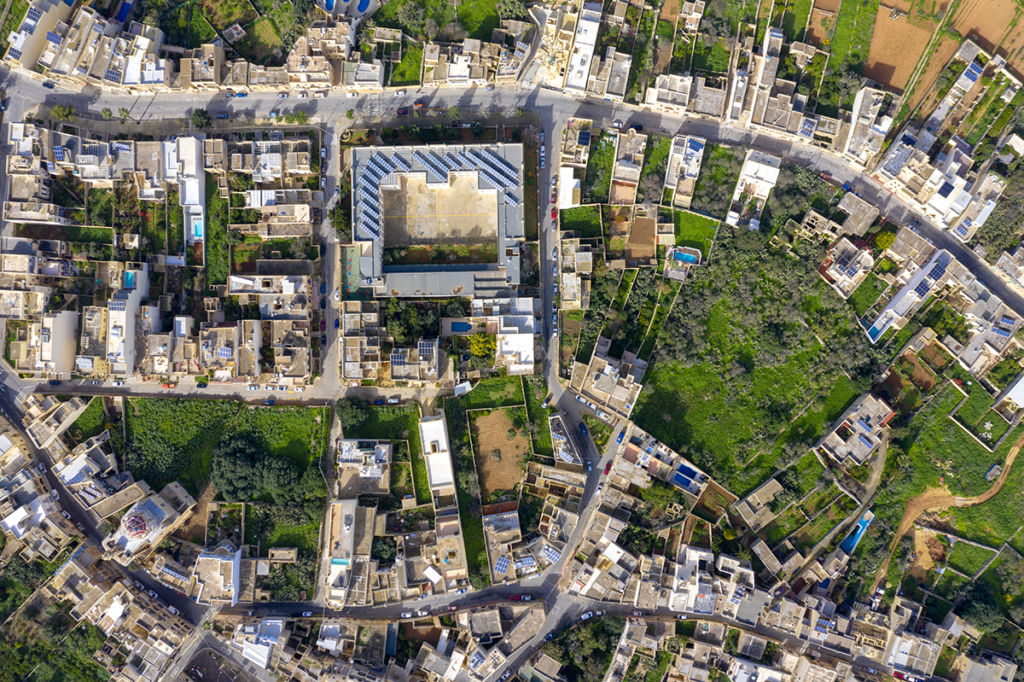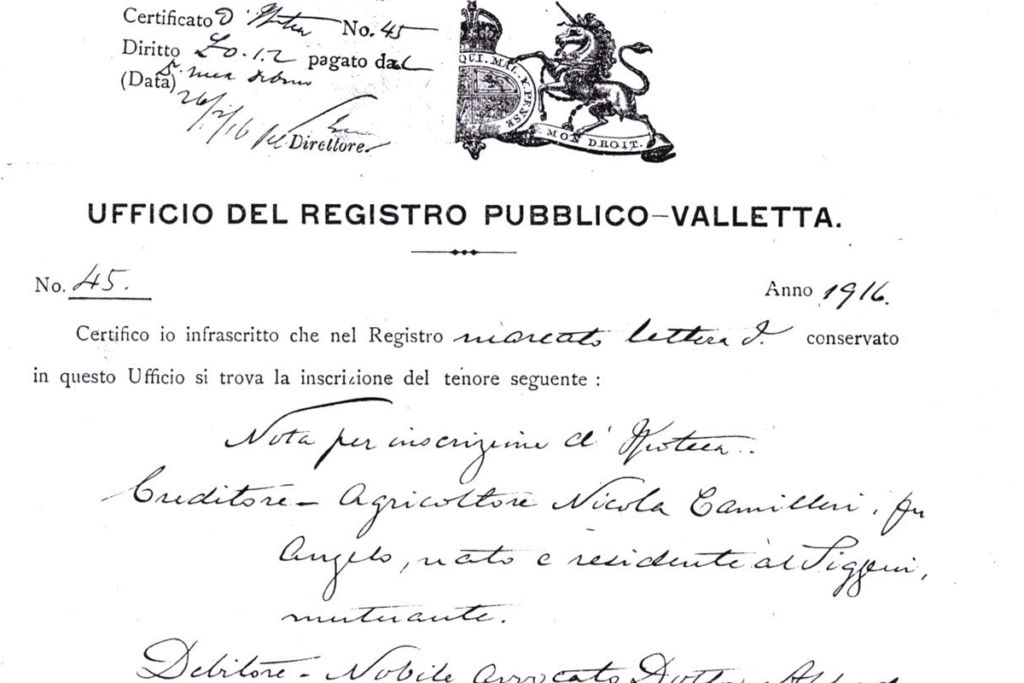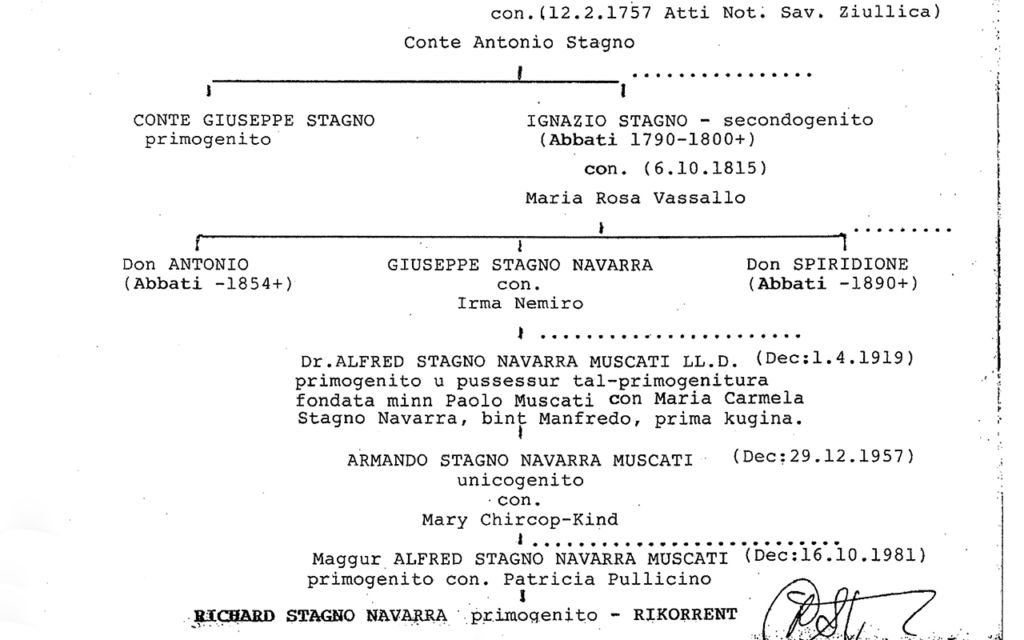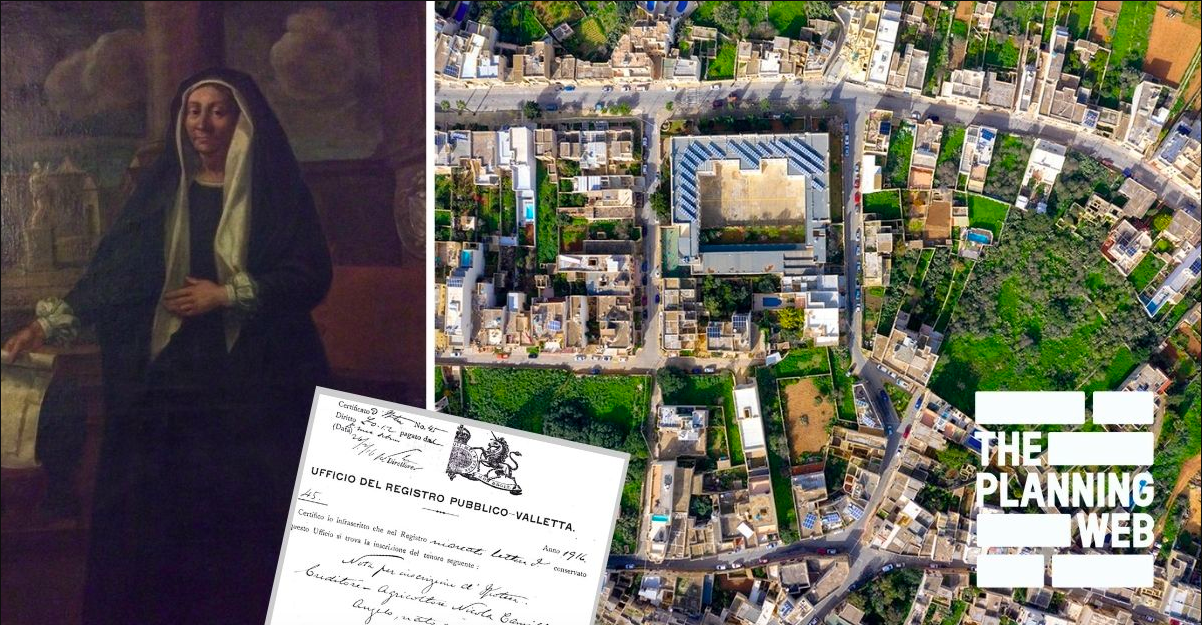Testimony given in an investigation into corruption almost 30 years ago showed that the Stagno Navarra family, who are from Sliema, had no cognisance of the medieval foundation called Beneficcju Ta Sant Antonio Delli Navarra before they were contacted by Gozitan businessman Joseph Vella.
Questions are being raised on whether the Stagno Navarras’ are, as they claim, descendants of Cosmana Navarra who in 1675 put vast lands in Gozo in the foundation to raise money for pious deeds.
In an ongoing court case, in which the foundation is requesting eviction of residents who live in a house build on land held by their ancestors for 130 years, the residents are challenging the provenance of the rector and, by the extension, the Stagno Navarras.
Testifying in that case, church official Raymond Bonnici said that the archdiocese relied on the Stagno Navarras’ “declaration” of descendants without requesting evidence. He was referring to the contract in which the Stagno Navarras’ “declared” and “guaranteed” to the archdiocese that they are the “closest descendants of Cosmana Navarra”.
The archbishop then relinquished his veto over emphyteutical land transfers, and land worth millions was later transferred by the rector to companies belonging to six Stagno Navarra siblings as well as the lawyer Carmelo Galea and retired magistrate Dennis Montebello.

Priests administered foundation for decades
Before Joseph Vella began searching for the heirs of Cosmana Navarra, the foundation had been administered by priests for many decades. The last of these rectors, Father Saverio Bianco, died in 1989. The rectorship remained vacant after his death.
Vella then found Richard Stagno Navarra, the elder Stagno Navarra brother, who declared himself rector and transferred a large piece of land to Vella for 150 years. Two weeks later he formally asked the archbishop to appoint him rector.
Months later the archbishop rejected his request. Several weeks later Richard filed an application in the Gozo court in which he claimed to be a descendant of Cosmana Navarra and requested, since the rectorship had been vacant, to be appointed rector. He did not mention that the archbishop had rejected his application. His lawyer was Carmelo Galea.
Then-magistrate Carol Peralta appointed Richard rector the next morning, and three days later Joseph Vella set up a company which had three directors – himself, Carmelo Galea and Magistrate Dennis Montebello. Richard transferred lands to this company as well as another one set up by Vella.
A corruption investigation into the case then found gross negligence on the part of the court.
The church meanwhile went to court to challenge the land transfers and nullify Richard’s rectorship.
The court of appeal eventually nullified Richard’s rectorship 20 years later in 2013 on the basis that the Court of Voluntary Jurisdiction that had decided on the matter had no jurisdiction to make such a decision – by that time Richard and Vella had both been dead.
Then four years later the archbishop signed away his power of veto overland transfers in a contract with the Stagno Navarra siblings.


What evidence of descent exists?
Research by Lovin Malta found two genealogy charts – or family trees – presented in the course of court cases by Richard Stagno Navarra. One is one page long, and the other is two pages. Both were presented by Richard and signed by himself – there is no name or mention of any genealogist who might have done the research.
The longest of these two was filed with the application that Richard put in at the Gozo court when he asked to be appointed rector. Courts would normally require evidence of this type to be produced by a court-appointed expert, who would then have to testify, but in this case (as pointed above) the magistrate summarily appointed Richard rector the next day.
The family tree does seem fairly detailed, but it narrows at around the turn of the twentieth century. A source gave Lovin Malta a page from published material that said that the foundation’s rector at the time, Giuseppe Stagno Navarra, died together with all his family when their palace collapsed on top of them in an earthquake that hit Messina in 1908. The devastating earthquake is estimated to have killed over 75,000 people.
This event is stated in Richard’s family tree. Then a line is drawn from another limb of the family to a man named Dr Alfredo Stagno Navarra, and reference made to a judgement of the Court of Appeal served in 1915.

Lovin Malta obtained a copy of that judgement and gave it to a historian to analyse it, which he agreed to do on the condition of anonymity due to his role within the church.
He reported that the court case was related to marital separation between Alfredo – who was born in Tehran, Iran – and his wife Carmela, and they owed money to some people. He said that children did not appear to be mentioned and neither did the foundation. And the dates shown on pages of the file or judgement are of the year 1916, not 1915.
In itself, this does not disprove or prove whether that the Stagno Navarra siblings are descended from Cosmana Navarra. In the wider context, it adds to the questions.
In any case, the archdiocese did request evidence and none was appended to the contract. According to legal sources, this makes the contract challengeable in court.
As for Joseph Vella, the man who found Richard Stagno Navarra and who is dead, in 2020 a company belonging to the Stagno Navarras’, Galea, and Montebellos’ – called Carravan Company Limited – gave each of his three children and widow a flat for free in the large development in Qala on foundation land.
Check out Lovin Malta’s Planning Web, the country’s first transparent and open platform letting you look at the ins and outs of Malta’s urban planning sector.
What do you think of the land grab?


Recent Comments